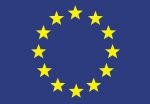How is the education system organised?
In Italy, there are both public and private education systems. Access to public education is free for citizens of all nationalities and is compulsory from 6 to 16 years old.
The education system is divided into five phases:
- Nursery school (Scuola Dell’Infanzia);
- Elementary school (Primary School or Elementary School);
- Secondary school (First Level Secondary School);
- High school (Secondary School);
- University.
Secondary schools, on the other hand, are divided into three categories:
- High school, which offers theoretical training with a specialization in a specific field of study (humanities, science, art, etc..);
- Technical Institute, where training is both theoretical and practical, with a specialization in a specific field of study (economics, humanities, administration, law, technology, tourism), often supplemented by an internship of three to six months in a company, association or university, during the fifth and final year of study.
- Professional Institute, where a more practical learning offer such as engineering, agriculture, gastronomy, technical assistance, crafts, etc. is foreseen. It allows students to look for a job as soon as they have finished their studies (sometimes before), as some schools offer a diploma after three years instead of five. Nevertheless, in Italy it is considered a lower level of education than the others.
Education rights for TCNs
Child& youth
Italian law provides that all children have the right and the duty to go to school from 6 to 16 years of age. As a resettled child, your minor children also fall into this category and therefore can attend classes and participate in school activities. Since your children will be automatically integrated into the compulsory National Education System, you will just have to take care of their enrollment using the online platform of the Ministry of Education, University and Research (MIUR). You should also know that, as of the age of 15, your children have the right to choose ways of learning different from full-time study, such as alternating school-work, cultural, social and productive experiences abroad, and apprenticeship.
Adult
As an adult, you will be automatically integrated into the compulsory National Education System. Additionally, you also have the right to enroll and attend the CPIA (Provincial Centres for Adult Education) to obtain the Secondary School Diploma. If you already have a job title or qualification in your country of origin and want them to be recognized in Italy, you should ask for the “recognition of foreign qualifications” to one of the competent offices (schools, universities, MIUR or other specific ministries) and submit the documents listed on the MIUR’s website. The qualification must be translated and stamped by the Italian Embassy. If there is no chance to obtain the documents in your country of origin, you can follow one of the administrative procedures available, for example the “Declaration of Value” of MAECI or the “Credential Information Service” of CIMEA.
How can I access education for me and my children?
You can enroll your children in the first year of primary school or in the first and second grade of secondary school each year during the period between January and February. Enrollment is online and is compulsory for all public schools with the exception of kindergartens, while it is optional for private schools. If you do not have access to the online system, you can go to school and the staff will do it for you. To choose a school, you can take a look at the MIUR online platform called “Scuola in chiaro”, where there is a list of Italian schools. If you are over 16 years old, instead, you can enroll in the CPIA, which are state schools established by the MIUR. In the CPIA you can study to obtain the so-called “Licenza Media”, that you can use when renewing your residence permit as proof of your knowledge of Italian, or attend free Italian language courses. With respect to registration to these courses, you will be asked to show each year specific documents such as the residence permit and the tax code.

 This website was funded by the European Union’s Asylum, Migration and Integration Fund. The content of this website represents the views of the author only and is his/her sole responsibility. The European Commission does not accept any responsibility for use that may be made of the information it contains.
This website was funded by the European Union’s Asylum, Migration and Integration Fund. The content of this website represents the views of the author only and is his/her sole responsibility. The European Commission does not accept any responsibility for use that may be made of the information it contains.


